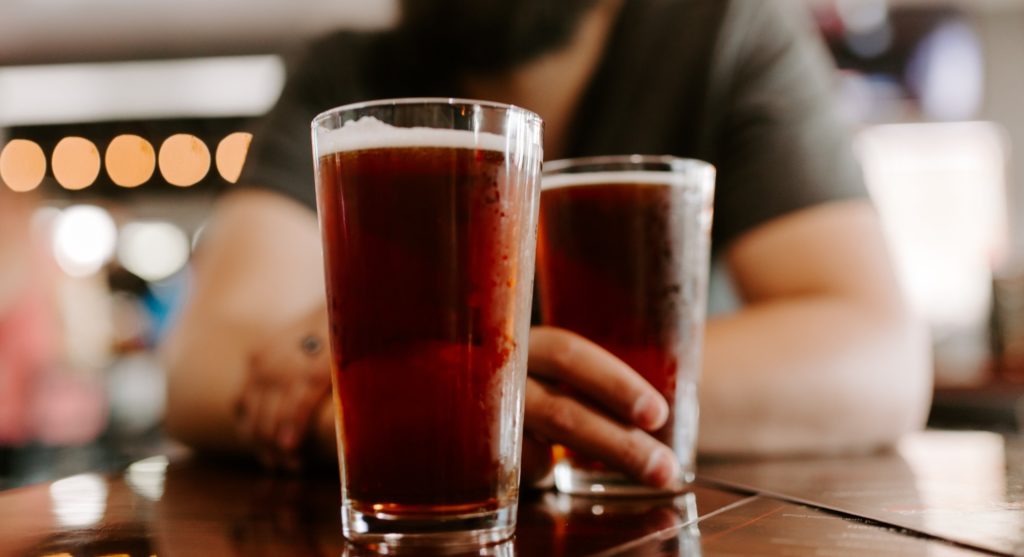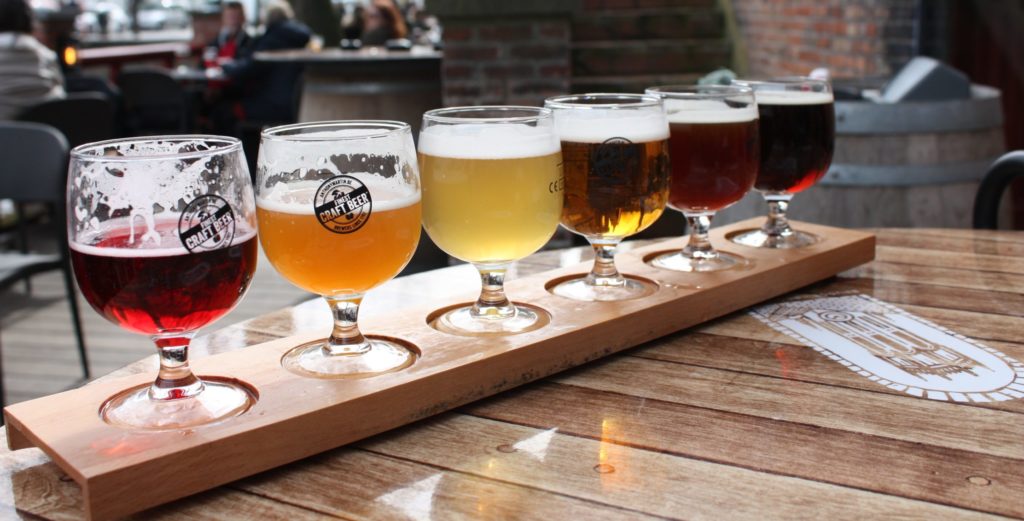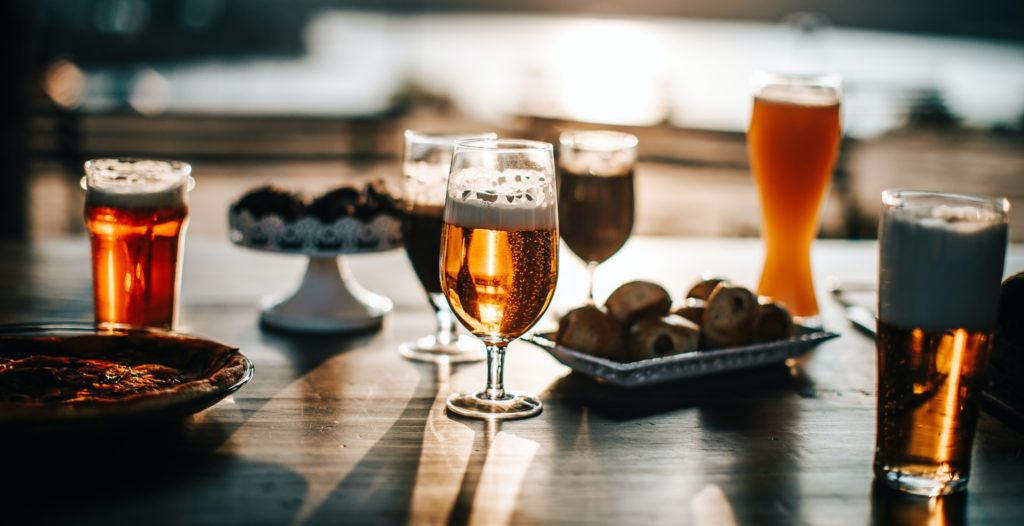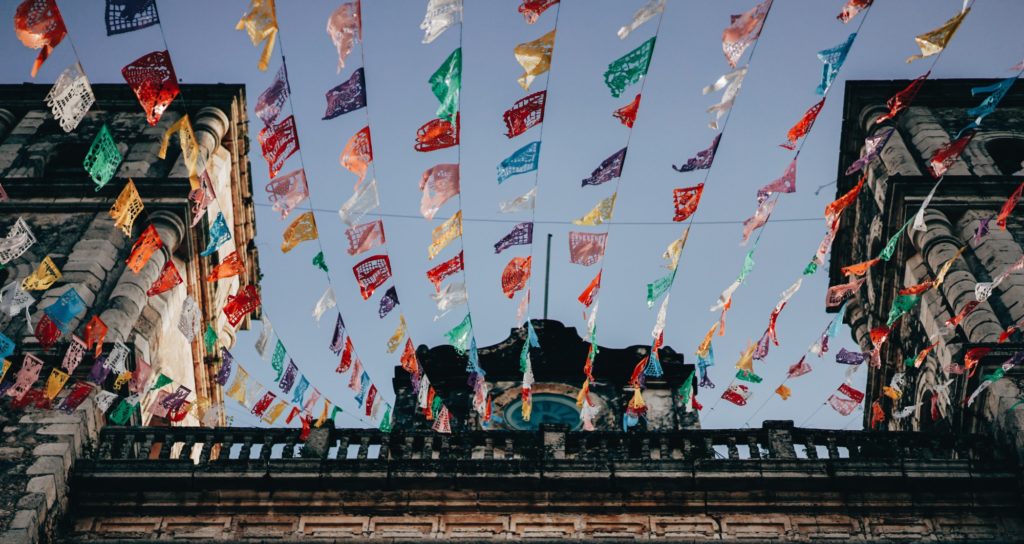Beer: The Ultimate Guide to getting into the hobby
Today, people don’t just like or love beer. They make it one of their passions. People are more obsessed with beer today than ever before. Part of the reason for this is the huge boom in craft breweries. The first craft brewery was started in 1965, making it a very new addition to the world of beer. Today, there are thousands of craft breweries across the United States.
Besides people’s obsession with drinking and purchasing beer, people have also turned to brewing their own beer at home. It isn’t tough to do, it’s customizable, and it’s fun, making it one of the most popular new hobbies in the past decade or so. It really has become a passion for some people, surpassing their love and enthusiasm for all other types of alcohol.
Beer is the oldest type of alcohol in the world, and it has been around for over 10,000 years. It has a long and interesting history, which is definitely worth learning about if you are a beer enthusiast yourself.
In order to become the ultimate beer expert, you need the ultimate guide. We put together all of the information you need to know for getting into the hobby. We’ll discuss how beer is made, the types of beer, countries of importance, what craft breweries are, and so much more.
Table of Contents

How is beer made?
To understand the differences between the types of beers, you must first understand how beer is actually made. Like all other alcohols, beer goes through fermentation, an essential part of the beer-making process. However, it does not go through a distillation process like spirits (like vodka and tequila) do.
When beer is being made, it goes through five main steps from start to finish. Whether it’s a large company with a factory or a small craft beer brewery, every beer goes through the same five steps.
1. Malting
You start with harvesting the grains you will use for the beer. Commonly used grains include hops, wheat, barley, and rye. These grains are processed by heating and drying, followed by a stage called cracking. The goal of malting is to isolate the enzymes needed for brewing.
2. Mashing
The second step is mashing. The freshly malted grains are placed into hot (not boiling) water for a set period of time. Experts recommend using water that is 148 to 158 degrees. Doing so causes the enzymes to activate, break down, and release their sugars. The water is then drained, and you are left with a sticky mixture.
3. Boiling
This sticky mixture (called wort) is then boiled for a set period of time. While it’s boiling, hops and other flavorings and spices are added to the boiling mixture. Hops balance out the sugar in the wort and act as a preservative.
4. Fermentation
The next step is fermentation—when the alcohol in beer is actually made. The wort is strained, cooled, and then added to a fermentation vessel. The fermentation vessels can be made of steel and are often conical in shape. Yeast is added and goes to work. The beer is stored for a few weeks at either room temperature or cold temperature, depending on the brew. The yeast eats the sugar and this process helps to produce alcohol.
5. Bottling
The actual brewing process is now complete. It’s time to bottle the beer and add carbonation. You can either add artificial carbonation or let the beer sit for some time and create its own carbonation through C02 production to get that iconic, fizzy quality.

Types of beer
There are over 100 different types of beer. This is because there are tons of known ways to brew beers with various additives and flavorings that give you a different end product.
For example, lager beer is not the same as a stout beer, but adding fruit flavors to tequila will not make it any different than a tequila that doesn’t have fruit flavors (besides the taste, obviously). This is just one of the things that make beer a unique kind of alcohol. It is most comparable to wine because they both have different varieties and types. But really, beer stands alone because of its brewing process and extensive varieties.
Ales and lagers are the two main varieties of beer, with other types falling into subcategories of either one. The ales are the oldest type of beer in the world, with roots going back 5,000 years. Leftover remnants of ale were found in a ceramic jug in Iran, which dated it to be 5,400 years old. Lagers, on the other hand, are several hundred years old, which makes it a relatively new type of beer in comparison. The subcategories of beer have all been created more recently.
Stouts
This is a type of ale. Stouts are unique in that you can really play around with the flavor and get some awesome results. There are a lot of crazy, rich stout flavors, like peanut butter, chocolate chip, Neapolitan, coffee, and oatmeal.
A stout is not typically a beer you would drink if you are partying or having several drinks. It is more common to have one or two stouts max because they are very heavy and have such interesting flavor profiles.
Best Stout Brands
Guinness: This is perhaps the most famous stout beer. It’s a heavy, full Irish beer that gives you a nice taste of roasted malt.
Belching Beaver Brewery: This brewery goes crazy with the flavors. Their Peanut Butter Milk Stout is frothy, silky, and delicious.
Porters
The porter is another variety of ale. It was invented in England in the 18th century and got its name thanks to its popularity with street and river porters in London. It is known for being dark in color due to its use of brown malt. It also contains extra hops, which adds to its heavy flavor. It is sweeter than stout and has flavors of caramel.
Best Porter Brands
Founders Brewing: This is a classic porter brew with rich and heavy flavors and a malty bitterness.
Moody Tongue: This porter uses a combination of specialty malts along with caramel to bring out flavors of chocolate and vanilla.
Ales
As we mentioned, ale is the oldest type of beer. It is, quite literally, the original beer that our ancestors were sipping on thousands of years ago. In fact, some unconfirmed Chinese artifacts suggest it has been around since 7,000 BCE. The process for making ale requires a warm fermentation method. The end result is a sweet, fruity-tasting beer. Ale is also brewed without hops, making it distinct from many other varieties.
Ales use the yeast that is found at the top of the fermentation tank, which prefers warmer temperatures. That means that ale is brewed between 60 to 72 degrees. Typical characteristics of ale beer are that it’s flavorful, robust, complex, fruity, and more aromatic.
Best Ale Brands
Pabst: This Old Tankard Ale is full of fruity and malty flavors, with an extra bitter finish.
New Belgium Brewing: The Fat Tire Amber Ale has a biscuit malt flavor with a fresh and hoppy finish.
Lagers
Lagers are generally crisp and refreshing. They use yeast that can be found at the bottom of a fermentation tank. This type of yeast prefers cooler temperatures, so lagers are brewed between 40 to 62 degrees.
Lager is actually the most common type of beer in the world. All of the classic beers (think frat party and cheap beers at the bar) are lagers, from Bud Light to Miller.
Best Lager Brands
Heineken: This lager has not changed since its creation in Holland in 1873—and if you happen to be in the Netherlands, you can even visit the factory in Amsterdam. It is smooth and bitter with hints of fruit. It is the most popular international beer in the U.S.
Bud Light: We know you’ve had a Bud Light at least once in your life (and if you went to college, probably more than once). It is the number one best-selling beer in the country, due to its crisp, clean flavor.
Coors Light: This is another crowd-favorite lager. It is a light, natural beer with a malty flavor that’s low in bitterness.
Blonde ales
Blonde ale is one of the most popular ale varieties. It is super light and refreshing, and people enjoy it because it is easy to drink. It’s generally considered a neutral beer because it doesn’t have dominating hops or malt flavor. They typically have hints of honey, fruit, and spices. Interestingly enough, this ale can be fermented with either lager or ale yeast.
Best Blonde Ale Brands
Mission Brewery: This unique blonde ale has the appearance of a pilsner and the dryness of a lager, but all the lightness and flavor of a blonde ale.
Affligem: This blonde ale is cloudy and has an orange-amber color. It is citrusy and sweet with hints of spices. It finishes dry and frothy.
Brown Ales
As its name suggests, brown ale is brown or dark amber in color. These beers are typically sweet and have a lower percentage of alcohol.
In the 17th and 18th centuries, they were brewed from 100% brown malt. Brown ales originated in London and were primarily a European-style beer until craft brewers in the U.S. began experimenting with them in recent decades. They are known for bold flavors of chocolate, bread, caramel, nuts, and raisins.
Best Brown Ale Brands
Sweetwater Georgia Brown: This is a malty and roasted beer with a crisp and clean finish. It has fewer hints of chocolate and caramel than other brown ales.
IPAs
The acronym IPA stands for India Pale Ale. It’s a hoppy beer that is very similar to traditional pale ales. They are known for being fruity in flavor, thanks to the high concentration of hops, and there are at least eight styles of popular IPAs. This style was invented in Britain in the 1800s, and gained worldwide popularity, and became one of their most exported items.
Best IPA Brands
Goose Island: This is a full-bodied, highly flavorful IPA. It has bright citrus aromas, and your taste buds will get hit with a strong taste of hops as it goes down. It has a very smooth flavor, and it’s a great beer for people who love the flavor of hops.
Lagunitas: This is a really unique IPA that blends 43 hops and 65 malts to get its intense flavor. It is strong on the hops, bold on the citrus aroma, and finishes sweet and dry.
Wheat beers
Wheat beers have a higher proportion of wheat than malted barley, and the most common types are from Germany and Belgium. In order to be classified as a wheat beer, it must contain at least 50% wheat. It is a top-fermented beer (similar to an ale), and the style was popularized in the U.S. by craft brewers. Most are naturally cloudy in appearance.
Best Wheat beer brands
Hoegaarden: This is a Belgian ale that is flavored with coriander and a citrusy hint of orange peel.
Allagash Brewing: This is a white wheat beer that blends oats, malted wheat, and raw wheat. This combination gives it a white appearance. It is refreshing in taste with hints of coriander and Curacao orange peel.
Sours
Sour beer has an intentionally acidic, sour, and tart taste. Bacteria is what gives a beer a sour and acidic taste. Other types of beers use controls to ensure there is no wild yeast. Sours allow wild yeast and bacteria into the brew. There are two common strains of bacteria that are used to make beer sour. These are called Lactobacillus and Pediococcus.
Best Sour beer brands
Victory Brewing: This company describes its Sour Monkey Tripel as being “all over the place.” It varies between hints of tart lemon and sourness. It is also very tart and acidic. It is not a dry beer, and it finishes with a malty grain flavor.

What is craft beer?
When you think of beer, your first thought is probably the big-name brands, like Budweiser, Heineken, and Miller. These are some of the biggest beer production companies, not only in the United States but in the entire world. These beer companies mass-produce beer on a very high level, and they have massive factories with tons of fermentation tanks and machines that will bottle their brews. They are able to turn out tons and tons of beer each and every day.
On the other side of the beer-making spectrum is craft beer. Craft beer is made by smaller companies that produce smaller quantities of beer. Craft beer companies are also typically owned independently, whereas most bigger beer companies are owned by corporations. This independent ownership allows brewers to take more risks and experiment with the beer they are producing, as well as giving drinkers a different experience.
There are also microbreweries, which produce even smaller quantities of beer. They traditionally have the most unique and interesting flavors and experiment with different brewing techniques. The standard regulations for microbreweries are that they must produce less than 15,000 barrels of beer each year. They also have to sell at least 75% of that beer at off-site locations. Some will have small tasting rooms or bars at their brewery.
Craft Beer Breweries
Typically the entire process of beer-making will start and finish at a brewery. If you’re looking for something cool and unique to do, many craft breweries offer a tour of the facility. You will get to walk through all of the production areas, and likely get to see beer being made right before your eyes. And, of course, the best part about taking a brewery tour is the beer tasting at the end!
Tastings
Just like with wine, beer tastings are very popular. Typically, you will go to a brewery or production facility for the tasting, but restaurants and bars will sometimes have tasting events as well.
Depending on how the tasting is set up, you will probably be able to try several varieties and types of beers. If it is at a brewery, you will most likely be tasting each of the beers they brew at the facility.
Flights
Flights are the best way to try out new beers you wouldn’t normally order at a bar or restaurant or to figure out which option is your favorite if you can’t decide which to pick.
When you get a flight, it typically comes with three to six small servings of beer (around two ounces). The beers come served on a tray that holds each of the mini glasses. Oftentimes, breweries will include little cards with each beer, telling you the name and any fun and important information about each type. Sometimes you can customize your flight, and other times they have a set flight option (such as a flight of sours, and ‘most popular’ flight, etc).

What countries are known for beer?
You can find beer in every country and pretty much every continent. There are unique flavors, styles, and types that can be found all over the world. Much like places like France, Italy, Spain, and California are known for their wine, and tequila is made only in Mexico, certain countries and cities are known for their beer.
Craft beer is most predominant in the U.S., but there are still plenty of options to be found in Europe and even Asia. If you love beer, you might just need to start planning a trip so that you can hit all these places.
Beer in the United States
In the states, there are over 8,000 craft breweries. Craft breweries make up a whopping 98% of beer companies in the country. There are quite a few cities that are known for their beer scene and breweries. One such city is Portland, Oregon. 40% of craft beer purchases happen in Portland, which means they sell more than any other city in the U.S. There are 60 brewers in this city.
We can’t talk about beer in the U.S. without mentioning Milwaukee, Wisconsin. After all, it is named Brew City for a reason. It is home to three huge companies: Pabst, Schlitz, and Miller. Finally, we have to mention San Francisco, which few people know is actually the birthplace of craft beer! America’s first craft brewery opened there in 1965.
Beer in Germany
Germany is one of the biggest European countries involved with the beer industry. If there’s one thing they do even better than sausage and pretzels, it’s beer. Much to many people’s disbelief, the Germans did not invent beer. We actually have the Middle East to thank for its creation. However, Germans did play a substantial role in the globalization of beer.
It was first created in monasteries, some of which are still operating. In 1516, Germany passed the Beer Purity Law. It mandated that all beer must be made from just barley, hops, and clean water. The law is still in effect today. At this time, it was actually safer for people to drink beer than it was for them to drink water. German scientists are responsible for separating two strains of yeast that became commercially produced for beer brewing. Also, the Pilsner variety of beer was created in Germany.
Beer in Belgium
As with the Germans, Belgians started drinking beer out of necessity due to the fact it was cleaner than their drinking water. Beer was actually being made in this region before Belgium even became an independent country. The two most popular types of Belgian beer are Trappist beers and Abbey beers.
Trappist beers are brewed in Trappist monasteries. This is one of the hardest beers to make because there are strict criteria that must be met in order to call it a Trappist beer. The criteria are as follows:
- The brewery must be inside a monastery and cannot be an independently functioning brewery.
- Monks must have some sort of involvement in the production of the beer.
- Profits from the beer have to be used to support the monastery.
Abbey beers are similar but with less strict guidelines. They are still made with monks and the monastery’s involvement, but they can be commercially made outside of the monastery.
Beer in The Netherlands
In the Netherlands, the most well-known beer is the pale lager. In fact, pale lager makes up approximately 95% of the beer consumption in this country. The most famous beer to come out of this country is Heineken, which is the perfect example of a pale lager. Heineken is the world’s third-largest beer brewer. Here is a crazy statistic for you: the Netherlands exports 50% of the world’s beer.
Besides Heineken, there are two other major breweries in the Netherlands. They are Grolsch and Bavaria. The three of these companies operate eight breweries total. Besides making its own beer, Heineken also brews the beer for Amstel.
Beer in Ireland
Ireland is famous for its production of ale without using hops. The plant is not native to the country and for that reason, it was never used. Ireland is 6th in the world for the highest consumption of beer.
Everyone’s heard of Guinness. This legendary company got its start in Ireland when Arthur Guinness purchased a tiny brewery in 1759. The brewery was in disarray and had hardly any of the necessary equipment. Nonetheless, he fixed it up and was successfully exporting his beer to England by 1769. He started by brewing ale beer but transitioned to porter in the 1770s.
Porter was invented in 1720 and was growing in popularity at this time. Guinness switched his recipe and found that the porter was even more successful. By 1799, he was only brewing porter until his death in 1803. Today, Guinness is a stout.
Beer in Japan
Beer is the most popular alcoholic drink in Japan, surpassing sake by a wide margin. There are four main companies that have complete control of the beer market in Japan. These companies are Asahi, Kirin, Suntory, and Sapporo. Sapporo is the most popular Japanese beer in the U.S. Most of the beer sold in restaurants and bars is of a light-lager variety.
Sapporo (the city) is one of the birthplaces of Japanese beer. A brewery was built there in 1876, and the Sapporo brand was born. Since the latter half of the 20th century, beer has skyrocketed in popularity and has remained popular among Japanese drinkers ever since. There are unique taxes on beer in Japan, which dictate that beer must be taxed according to its malt content. Because of this, Japanese brewers created alcoholic drinks that contain less malt. These include Happoshu and New Genre (Shin Janru).
Get Beer Delivered
Beer Delivery Near You
Get into the beer hobby with Saucey
Just like with wine, being knowledgeable about beer is both impressive and captivating. As you can tell from this article, beer contains a long and winding rabbit hole of information. Its history extends over 10,000 years! While this guide should get you started on the most important aspects of beer, there’s still a lot more to learn. There are many credible, enthusiastic resources out there that cover a wide range of topics that relate to beer.
So now that you know (pretty much) everything there is to know about beer, there’s just one thing left to do: start drinking it. You aren’t going to be able to appreciate and understand the differences between beers until you’ve tried a vast selection of them.
We can explain all the details of each type of beer, but it is hard to really understand it unless you’ve tried it for yourself. When you taste beer, you will start to pick up on the different flavor profiles, ingredients, and tastes of hops and malts. Plus, it’s just plain fun sampling a good variety of different kinds.
When you’re ready to dip your toe into the wide world of beer, there’s a one-stop-shop you need to try. Head to Saucey to find beer delivery near you. We have hundreds upon hundreds of beer selections, ranging from classics like Bud Light to small craft brewers with unique flavor profiles. You’ll find cans and bottles, plus different size packs for every occasion. We have pretty much any beer you can think of; just check our beer section to choose your adventure.
The best part about Saucey is that we deliver everything right to your door. No more last-minute trips to the gas station or grocery store just to pick up a 6-pack for you and a friend. Instead, choose the safer and more convenient option. Just add everything you want to your cart, head to checkout, and place your order. Our expert fleet will deliver your beer as soon as possible, or you can schedule a time that works better for you. Pour yourself a cold one, you’re now a beer expert. Cheers!



